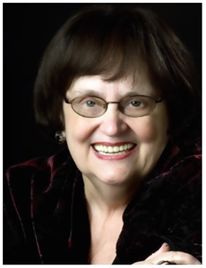Why Worry About Copyright?
By Lysa Martinelli
 The Teaching, Learning and Technology Roundtable will host the presentation: “Why Worry About Copyright? A Systematic Approach to Thinking About Any Copyright Issue”. Guest speaker Kevin Smith will discuss Fair Use and the grey areas as well as providing guidance to students and the faculty that advise them on the use of published materials in dissertations and theses.
The Teaching, Learning and Technology Roundtable will host the presentation: “Why Worry About Copyright? A Systematic Approach to Thinking About Any Copyright Issue”. Guest speaker Kevin Smith will discuss Fair Use and the grey areas as well as providing guidance to students and the faculty that advise them on the use of published materials in dissertations and theses.Where: Walsh Library – Ground floor, Beck Rooms.
Registration Required (free): https://is.gd/p61YzaThis free event is sponsored by the Teaching, Learning & Technology Roundtable (TLTR) Copyright Committee. The TLTR is a consortium of faculty, administration and students that meets in action teams to discuss institutional issues related to teaching, learning, and technology.
Guest speaker Kevin Smith became the Dean of Libraries and Courtesy Professor of Law at the University of Kansas in May 2016, after 10 years as Director of Copyright and Scholarly Communications at the Duke University Libraries. As both a librarian and a lawyer specializing in intellectual property issues, Smith’s role at Duke was to advise faculty, staff, and students about the impact of copyright, licensing, and the changing nature of scholarly publishing in higher education. Prior to that, Smith was director of the Pilgrim Library at Defiance College in Ohio, where he also taught constitutional law. His teaching experience is various, having taught courses in theology, law, and library science; he currently teaches Copyright Law in a Digital Age for the University of Kansas Law School.
Smith is the author of numerous articles on the impact of copyright law and the internet on scholarly research as well as libraries’ role in the academy. He has been a highly regarded blogger on these issues for many years, and in 2013 published Owning and Using Scholarship: An IP Handbook for Teachers and Researchers with the Association of College and Research Libraries. His book on Coaching Copyright, with Erin Ellis, was released by the American Library Association in the spring of 2019. Smith holds a BA from Hamilton College in Clinton, N.Y., an MA from Yale Divinity School, an MLS from Kent State University, and a JD from Capital University. He did doctoral work in theology and literature at the University of Chicago. Smith has been admitted to the bar in Ohio and North Carolina.
Follow Kevin Smith on Twitter https://twitter.com/kulibdean
Let us know what you think! Send us your comments–Feedback Form
Connect with #SHU_Libraries Homepage · Email · Twitter · Facebook


 Under the dome of Walsh Library hangs a quote from St. John Paul: “Faith and reason are the two wings on which the human spirit rises to the contemplation of truth.” For 25 years, Walsh Library has stood as the cornerstone of Seton Hall’s pursuit of reason within our Catholic values.In 1990, the University’s leadership noted the need for a new library. The Very Reverend Thomas Peterson, O.P., former university chancellor, said, “Seton Hall needs a new library and she needs it now. It must be her star, the jewel of her campus.”Four years later, Walsh Library opened. In the April 28, 1994 edition of the University’s student-run newspaper, The Setonian, then-Dean of Libraries Robert jones called the library dome “‘the outstanding architectural feature of the building.’ [Jones] said the dome is the library’s crowning feature and compared it to the dome of the Library of Congress.”
Under the dome of Walsh Library hangs a quote from St. John Paul: “Faith and reason are the two wings on which the human spirit rises to the contemplation of truth.” For 25 years, Walsh Library has stood as the cornerstone of Seton Hall’s pursuit of reason within our Catholic values.In 1990, the University’s leadership noted the need for a new library. The Very Reverend Thomas Peterson, O.P., former university chancellor, said, “Seton Hall needs a new library and she needs it now. It must be her star, the jewel of her campus.”Four years later, Walsh Library opened. In the April 28, 1994 edition of the University’s student-run newspaper, The Setonian, then-Dean of Libraries Robert jones called the library dome “‘the outstanding architectural feature of the building.’ [Jones] said the dome is the library’s crowning feature and compared it to the dome of the Library of Congress.”
